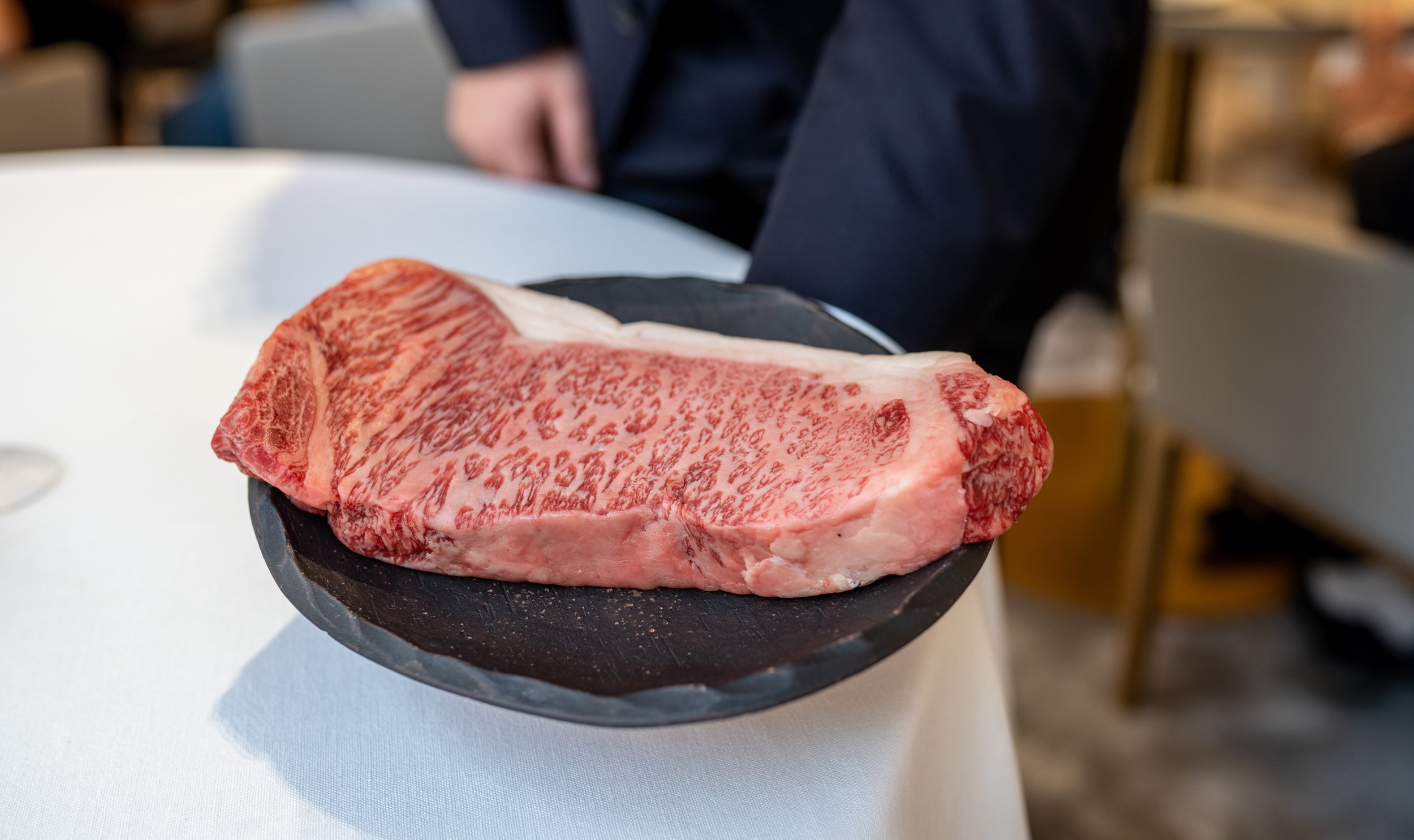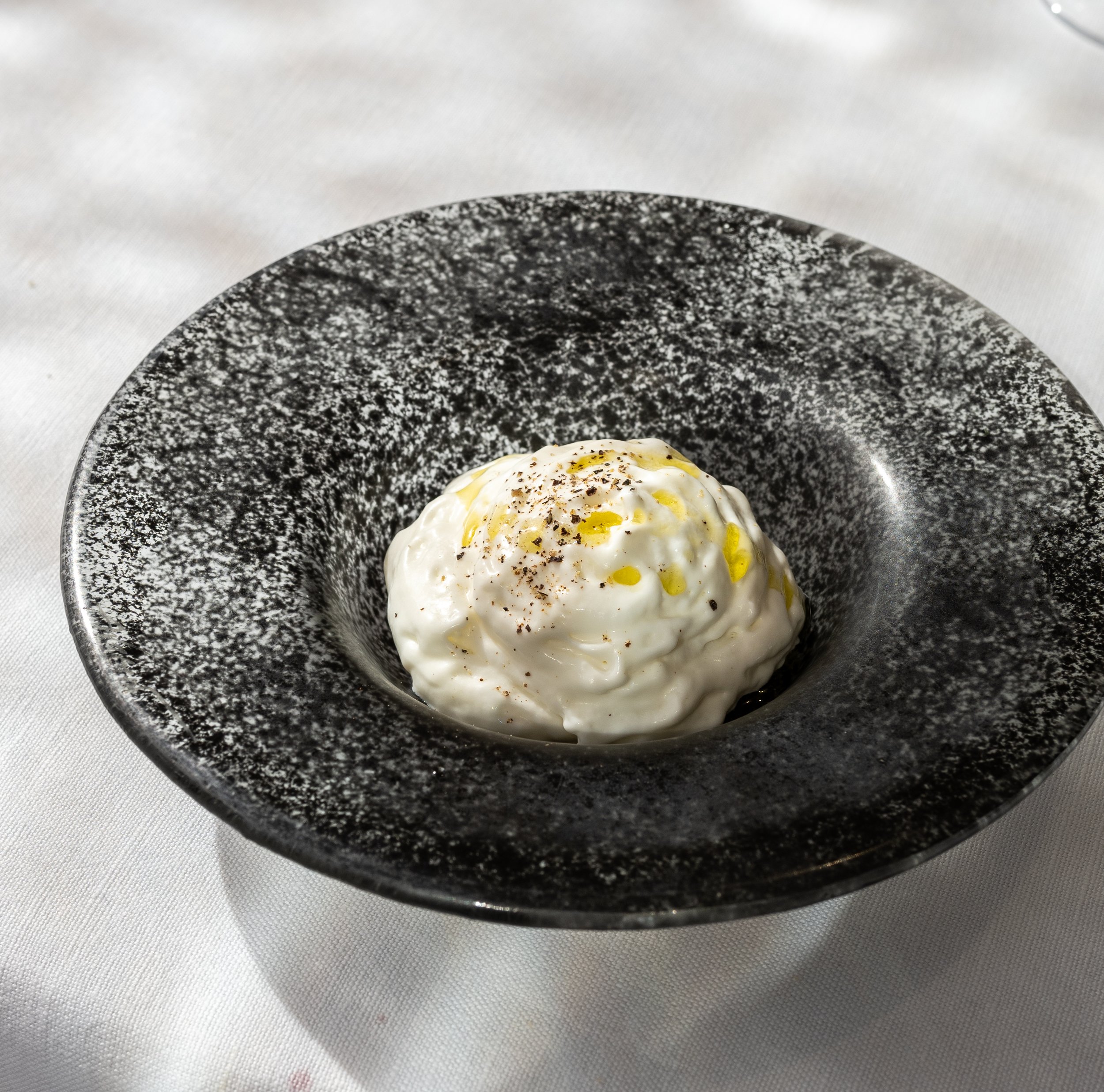Kei
Kei review at-a-glance
Awards: 3 Michelin Stars
Rating: 95/100
Verdict: Kei is one of the newest three stars in Paris but already finds itself among the best. A perfect blend of modern cooking with roots in French cuisine but plenty of Japanese touches that distinctly imprint the chef’s style on each course. This wasn’t a bombastic tour of bold flavors but something more restrained that focuses on quality products and impeccable technique. At the time of my visit, there were only nine three-starred restaurants in Paris. Despite being the most recent addition to the scene, Kei found itself pushing up against L’Aperage and Le Cinq for the best of the nine. Next time you are in Paris, ignore the old stalwarts like Guy Savoy and Gahnaire and make a beeline for Kei - you won’t be disappointed.
Price I Paid: €395
Would I revisit: Maybe
Date Visited: September 2021
Value: 13/20
Kei Background
Before Plentitude barged into the picture in 2022, Kei was the newest three-star in Paris when it earned the ultimate accolade in 2020. After joining the ranks of the Parisian culinary elite, Kei’s hilariously simple website and e-mail reservation system were not quite able to keep up as they were inundated with so many reservation requests (including from me) they needed to put an auto-reply up apologizing for delays in responding to e-mails. Sadly only one month after the promotion in February 2020, all of the restaurants in Paris closed due to COVID and the restaurant could not fully capitalize on earning the prestigious honor. On the bright side, Kei used the COVID closure to give the restaurant a glow-up with a renovated dining room and a redesigned website.
The restaurant is named after its head chef, Kei Kobayashi, who opened the eponymous restaurant in 2011. Originally from Nagano, Chef Kobayashi moved to France at the age of 21 and worked at some of the most prestigious kitchens in the country including Auberge de Vieux Puits and Plaza Athenee. Given most of his formative culinary years were spent in France, Chef Kobayashi’s cooking style is more French than Japanese. That said his Japanese heritage was still very evident in how it influenced flavors, ingredients, and composition. While it has become in vogue for European chefs to use Japanese ingredients, I found the food at Kei to be refreshing and original. The cooking reminded me of French restaurants in Japan where the food is decidedly French but also reflects Japanese cuisine’s sensibilities on the purity of flavor and lightness.
Rather than having menus of varying lengths, Kei offers four different menus ranging from €175 - €395 with the difference being the level of luxury in the ingredients used rather than the number of courses. I liked this concept as it opens the restaurant up to a broad range of guests and lets everyone see the chefs cooking across a full-tasting menu whether they go for the cheap or expensive menu. I went with the most expensive option which included two caviar dishes as well as wagyu for the main course. For comparison, the €295 menu included Spanish beef and one caviar dish while the cheapest had no caviar and different meat. Given the cooking quality I experienced, I have no doubt you will have a great time no matter what menu you pick.
On a happy note, the service (and particularly the sommelier) at Kei was wonderful. I originally scheduled a meal for the first service after COVID but this was regrettably canceled as the restaurant’s renovations were not complete. I ended up rebooking some 5-months later and despite not mentioning the prior cancellation, I was greeted with an apology and a glass of champagne on the house. Even better, when considering wines by the glass, the sommelier did a blind taste test for two wines he thought I would enjoy based on my preferences which was a fun way to pick a glass and something I wouldn’t mind more restaurants embracing.
What I ate at Restaurant Kei
My lunch at Kei started off with a spoonful of red shiso sorbet which offered a nice palate cleanser before the two snacks it was served with - a cucumber topped with a bit of black miso and a cracker filled with yogurt mousse and topped with sardine. The most substantive snack was a parmesan gougère with a touch of Japanese ichimi spice (which I couldn't detect) that was served warm and well made. This was a solid opening act, not as remarkable as the parade of small plates you get at some restaurants but fitting with the style of the restaurant. The amuse bouches were followed by the bread which I found to be a tad dense. Worse, the butter it was served with was stone cold. This was a surprising slip-up for a restaurant at this level. Thankfully, this minor mistake was pretty much the only one across an otherwise impressive experience.
The first dish was very cerebral, a peach gazpacho with Mediterranean shrimp, caviar and smoked roe cream emulsion. The gazpacho was a bold choice to start off the meal, the peach flavor pairing very well with the naturally sweet shrimp which were served almost raw to highlight their flavor. The roe cream added a further layer of flavor but most importantly some fattiness to round things out. Not to be forgotten, the caviar (one of two caviar dishes on the menu) added much needed salinity. There were some risky choices in this course but the kitchen stuck the landing with flair.
One of the signatures of the kitchen is a “garden salad”. Much more than a salad, this featured some smoked salmon at the bottom with an assortment of gently cooked vegetables that vary with the season. On top, there was a quasi-pesto made of whipped arugula and basil and a further foam of yogurt, olives, capers and anchovies. For good measure, there is even a crumble of black olive and almond. Upon first inspection, I thought this was merely a copy of the famous “gargouillou” from Michael Bras but it turned out to be something much more. While Bras’s dish fetes his homegrown vegetables, Kei’s variant was more about discovery. As you dug deeper, you got more and more integrated flavors including finishing off with the aforementioned salmon (perhaps hommage to the solitary ham in Bras’ dish?). While most bites had tremendous balance, by the end I felt like I was getting too much of the fatty stuff like the mayonnaise and foam but this only slightly distracted me from the experience. A very intriguing and tasty dish.
The next course was seabass served with two strong condiments. I thought it was fun mixing and matching the different sauces, both of which were well-made and flavorful. The bass was topped with lemon caviar which added a great freshness and was so delightful I wouldn’t have minded if it was provided even more generously while some cucumber flower had a balancing bitterness. Interestingly, the scales were left on the fish and crisped up for texture, a technique I have not heard of before. While the idea might gross some out, I thought it worked very well and gave an incredibly crispy texture without being too fishy. According to my waiter, even if this sounds like something you might want to try at home you shouldn’t. She did and ended up ruining a perfectly good piece of fish.
This was followed by another seafood course of Scottish lobster tail that had been ringed in a bloody mary mayo, sprinkled with fried quinoa and gently rested on a large bed of sparkling caviar. While it was still worthy of three stars, I thought I would enjoy this dish a tad more than I did. The lobster was supremely tender and the caviar plentiful (perhaps even testing my theory that there is no such thing as too much caviar) but I thought the spice factor in the bloody mary mayo could have been amped up more than a few notches. The fried quinoa was a nice touch as it added a needed textural component. Another strong showing from the kitchen at Kei that would have reached rarified air if they dared a little more spice.
The main course on the most expensive menu was A4 grade beef from Kagoshima which was served simply with a pan sauce and some deeply carmelized shallot to add some punchy sharpness. Given the quality of the beef, you can probably guess this was a joy to eat and it was. The kitchen let the beef shine by serving it simply and the dish was better for it. On the side was a pair of deep fried gnocchis which were nothing less than two small golden balls of joy, fried to absolute perfection. Further, there was a small dish of beef tartar using the same A4 meat which rivaled the cooked beef for flavor, the seasoning spot on and the deep meat flavor coming through with a bit of herb for balance. This was a stunner of a main course.
Before moving to dessert, a simple looking cheese dish came out that featured blueberry sorbet that had been covered with a goat cheese foam, Sicilian olive oil, and a judicious amount of Vietnamese black pepper which was applied tableside from an ornate pepper grinder. This was a wonderful course, providing a perfect bridge between savory and sweet as the rich goat cheese played wonderfully with the dessert like blueberry sorbet. What really took this to the next level was the swig of extremely high quality olive oil and the pepper, both of which were applied amply and imparted a ton of flavor.
Finally, the meal ended with chestnut ice cream, yuzu pearls, and chestnut cream enrobed in a meringue coating. This was a classy take on the classic French Mont Blanc dessert with the yuzu pearls a nice touch. The meringue in particular was both stunning to look at and had impressive texture. After the high standard of the savory course, I am glad the pastry kitchen was up to the test by sending out a dessert that felt in tune with the rest of the meal both in terms of quality and theme.











